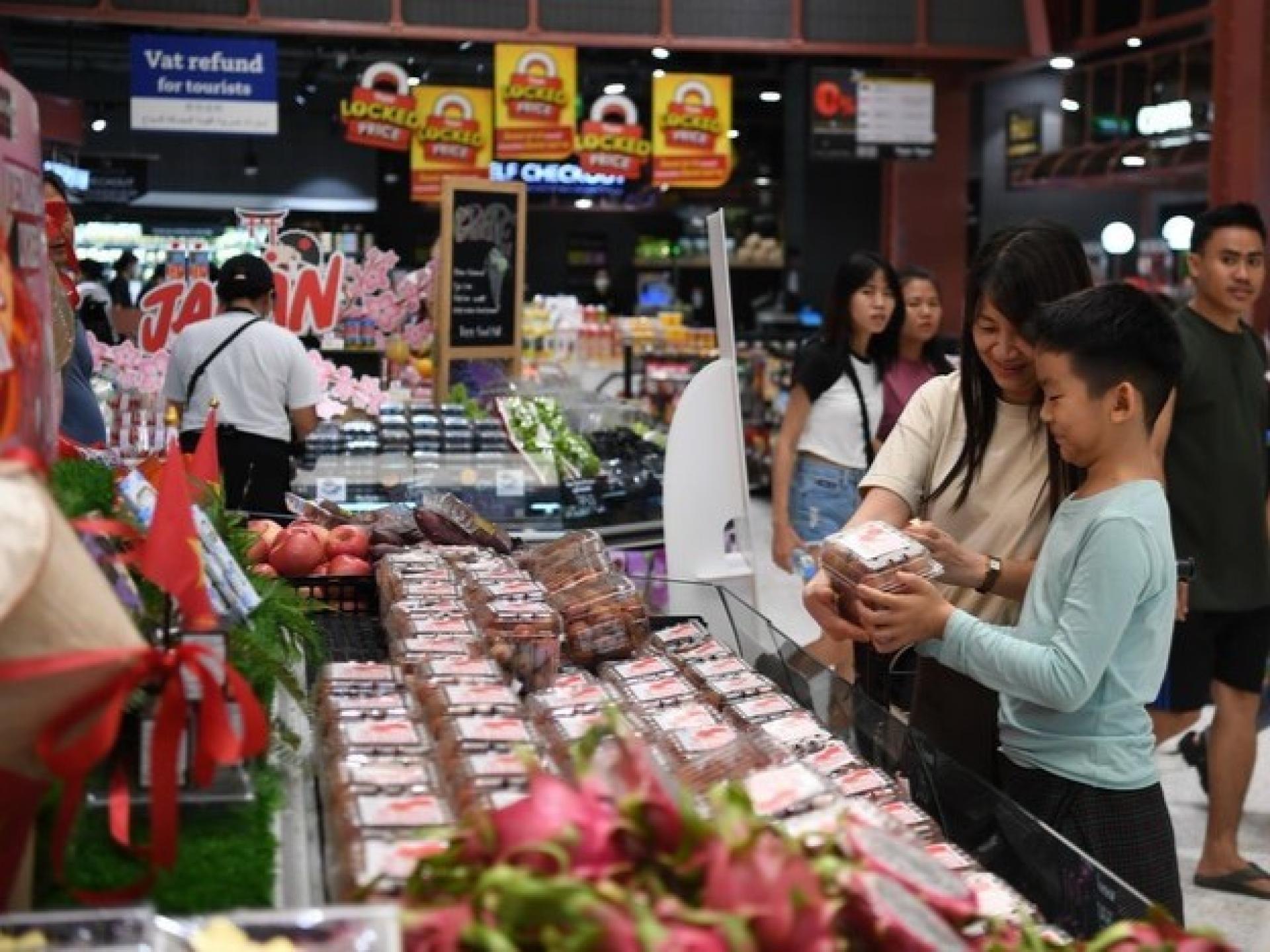(Hanoi, 10th) Over the past 80 years since independence, especially during nearly 40 years of renovation, Vietnam's agriculture has experienced leapfrog development. From formerly barren lands to today's golden rice fields, agriculture has become an important pillar of national economic growth.
In 2024, Vietnam's agricultural trade surplus reached USD 17.9 billion, an increase of 46.8% compared to 2023, accounting for 72% of the country's total trade surplus, highlighting agriculture's key position in balancing international trade.
Breakthroughs in the Rice Industry
Tran Ngoc Thach, director of the Mekong Delta Rice Research Institute, stated that the region's main rice varieties are now bred locally. In 2024, newly bred multi-gene resistant varieties boast pest, disease, and salinity tolerance, meeting climate change adaptation and export requirements. The institute has also bred high-yield, high-quality Japanese rice and specialty rice suitable for local conditions.
In the north, Thai Binh Seed Group has developed 30 crop varieties with independent intellectual property rights, and its rice is promoted on 20% of farmland nationwide. Through north-south collaboration, Vietnam's total paddy output reached 43.7 million tons in 2024, with 9.18 million tons of rice exports—a historic record.
Diversified Industries Rise
In addition to rice, Vietnam's fruit varieties now ensure year-round supply. Aquaculture, including vannamei shrimp, pangasius, and tilapia, has given rise to several "billion-dollar industries." Coffee varietal improvement has also yielded remarkable results. Phan Viet Ha, deputy director of the Tay Nguyen Agriculture and Forestry Science and Technology Institute, noted that newly bred robusta varieties yield up to 7 tons per hectare, with coverage exceeding 90%, cementing Vietnam's position as a major coffee producer globally.
Green Transition and Global Competitiveness
In Xinlong commune, Dong Thap Province, farmer Nguyen Van Shi'an increased income and reduced greenhouse gas emissions by adopting mechanization and environmentally friendly cultivation standards. The low-emission, high-quality rice model has been promoted throughout the Mekong Delta, and "Green Vietnam Rice" is gradually entering international markets. Coffee cultivation has also enhanced export competitiveness through sustainability certifications such as Rainforest Alliance and 4C.
Phung Duc Tien, Deputy Minister of Agriculture and Rural Development, stated that Vietnamese agricultural, forestry, and fishery products have been exported to more than 200 countries and regions, gaining a firm footing in markets such as the US, China, Japan, the EU, and the Middle East. In the future, Vietnamese agriculture will continue to strengthen the value chain, upgrading production, processing, and consumption, enforcing stricter quality control and traceability management, striving to build a global brand and ensure a more prominent presence for Vietnamese agriculture on the world stage.
In 2024, Vietnam's agricultural trade surplus reached USD 17.9 billion, an increase of 46.8% compared to 2023, accounting for 72% of the country's total trade surplus, highlighting agriculture's key position in balancing international trade.
Tran Ngoc Thach, director of the Mekong Delta Rice Research Institute, stated that the region's main rice varieties are now bred locally. In 2024, newly bred multi-gene resistant varieties boast pest, disease, and salinity tolerance, meeting climate change adaptation and export requirements. The institute has also bred high-yield, high-quality Japanese rice and specialty rice suitable for local conditions.
In the north, Thai Binh Seed Group has developed 30 crop varieties with independent intellectual property rights, and its rice is promoted on 20% of farmland nationwide. Through north-south collaboration, Vietnam's total paddy output reached 43.7 million tons in 2024, with 9.18 million tons of rice exports—a historic record.
Diversified Industries Rise
In addition to rice, Vietnam's fruit varieties now ensure year-round supply. Aquaculture, including vannamei shrimp, pangasius, and tilapia, has given rise to several "billion-dollar industries." Coffee varietal improvement has also yielded remarkable results. Phan Viet Ha, deputy director of the Tay Nguyen Agriculture and Forestry Science and Technology Institute, noted that newly bred robusta varieties yield up to 7 tons per hectare, with coverage exceeding 90%, cementing Vietnam's position as a major coffee producer globally.
Green Transition and Global Competitiveness
In Xinlong commune, Dong Thap Province, farmer Nguyen Van Shi'an increased income and reduced greenhouse gas emissions by adopting mechanization and environmentally friendly cultivation standards. The low-emission, high-quality rice model has been promoted throughout the Mekong Delta, and "Green Vietnam Rice" is gradually entering international markets. Coffee cultivation has also enhanced export competitiveness through sustainability certifications such as Rainforest Alliance and 4C.
Phung Duc Tien, Deputy Minister of Agriculture and Rural Development, stated that Vietnamese agricultural, forestry, and fishery products have been exported to more than 200 countries and regions, gaining a firm footing in markets such as the US, China, Japan, the EU, and the Middle East. In the future, Vietnamese agriculture will continue to strengthen the value chain, upgrading production, processing, and consumption, enforcing stricter quality control and traceability management, striving to build a global brand and ensure a more prominent presence for Vietnamese agriculture on the world stage.
